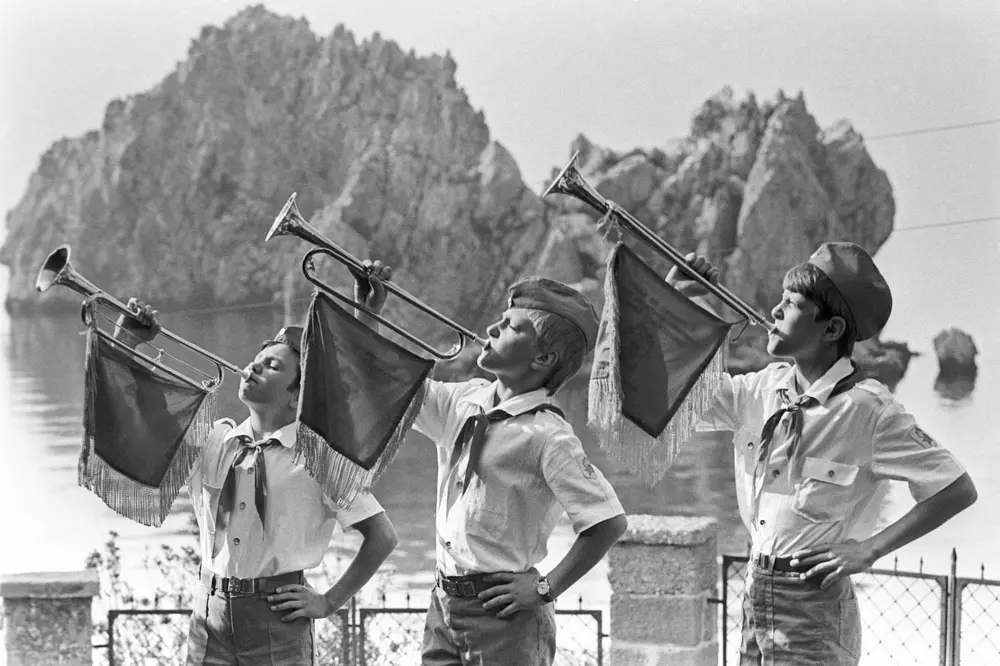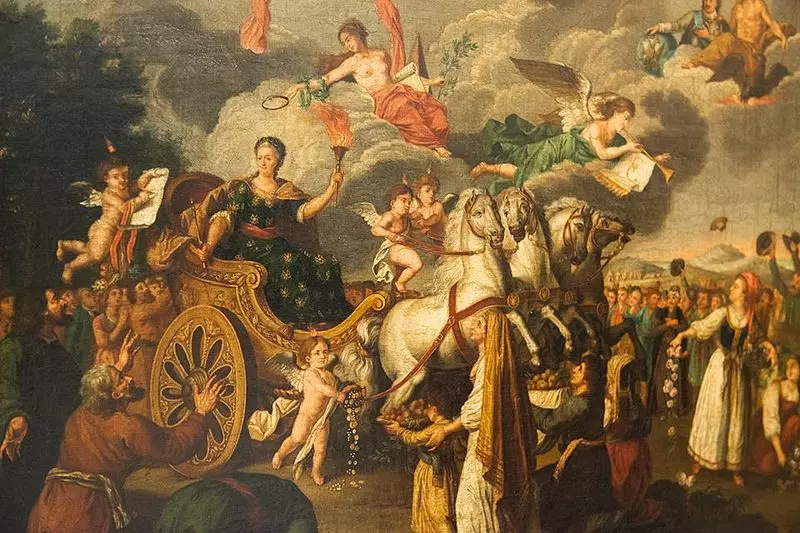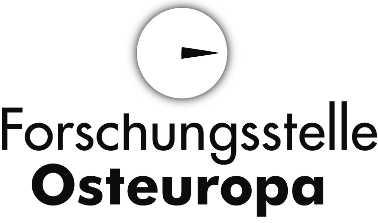For many in Russia, Crimea is a special place. Most Russians feel a special connection with the Black Sea peninsula – in contrast to other regions of the former Soviet Union. This connection is based on a complex web of historical narratives and events that are experienced and heard supra-individually as well as very personal experiences collected over countless holidays. The reputed baptism of the “apostle-like” Grand Prince Vladimir in Crimea, the heroic defence of Sevastopol, the poetry of Alexander Pushkin, the paintings of Ivan Aivasovsky, beautiful scenery and carefree holidays: all of these are representative of the peninsula’s considerable cultural significance. One should also note that, through the annexation, President Putin was able to “undo” the loss of Crimea to an independent Ukraine – felt by many as a national disgrace – and thereby ease the post-imperial aches of many Russians. While this does not justify Russia’s seizure of the peninsula in violation of international law, it can help to explain why the majority of the population approves of Crimea’s incorporation.

Even before the annexation in March of 2014, it was Russia that stood out for many living on the peninsula as a country with a special connection to them, not only for Russian citizens but also many other Slavs living there – ethnic Russians and ethnic Ukrainians make up ca. 60 and 24 percent, respectively, of the Crimean population. Crimea’s 1954 transfer, under Soviet auspices, to the Ukrainian Soviet Republic was of no practical relevance as long as the USSR continued to exist, although contemporaries did wonder about it at the time.
The situation changed with the dissolution of the Soviet Union in 1991. Although the Russian government and several prominent public figures – e.g. Nobel prize-winning author Alexander Solzhenitsyn or long-time Moscow mayor Yuri Luzhkov – repeatedly voiced their discontent with the constitutional arrangement by which Crimea belonged to Ukraine, in some cases even questioning its legitimacy, the Russian Federation actually did acknowledge Ukraine’s ownership in various binding treaties with Kiev.
In the eyes of the majority of the Russian population, taking control of Crimea during the 2013/2014 “Euromaidan” was a correction of a historical wrong. This view is strengthened by complex historical-political measures that accompanied it: for one, questions have been raised about the territorial integrity of Ukraine and its right to develop independently of Russia, and for another, the peninsula is exalted as an integral part of Russia through the endless repetition of a set of smaller and larger narratives about “our Crimea”.
“Reunification” with Russia, as the annexation of Crimea is officially termed, won high approval ratings for President Putin. The narrative of “our Crimea” presented by him and other figures places the peninsula’s history into a linear Russian–East Slavic–Orthodox model, a feat made possible only with the help of a hefty dose of historical misrepresentation. However, neither the President nor his advisors invented the core elements of this narrative; they are far older.
The sacred significance of Crimea
In numerous speeches, Putin has repeatedly stressed that the incorporation of the Crimean Peninsula holds special significance for Russia and the nation. In one such speech, he emphasised the high percentage of Russians who live in Crimea, the peninsula’s strategic importance and its spiritual significance for the nation and the state. Paraphrasing Putin: Crimea, where Prince Vladimir is said to have been baptised in 988, is as important for Orthodox Russia as the Temple Mount in Jerusalem is for Jewry and Islam. The President was referring here to the Primary Chronicle (Chronicle of Nestor), which remains the most important primary source for research on Kievan Rus. According to the chronicle, the heathen Vladimir converted to Byzantine Christianity in 988 not far from present-day Sevastopol. While his presence on the peninsula in the period in question is not disputed, there is no real way to ascertain whether his baptism, which led to the Christianisation of Kievan Rus, actually did take place in Crimea. There are other stories of uncertain origin that also emphasise Crimea’s sacral significance, such as the story of the apostle Andrew, who is said to have passed through Crimea on his way from the Holy Land to the territory of present-day northern Russia … Collective emotions and beliefs often prove more powerful than the findings of historical scholarship.
Crimea as an Old Slavic settlement area
Something similar can be said of the widespread habit – one that is closely bound up with the notion of Crimea as sacred – of thinking of the peninsula as having been Slavic territory since olden times. Many Russian writers have drawn inspiration from texts like the Vita of St. Cyril (originally named Constantine), who, with his brother Methodius, created the basis for the Old Slavic alphabet and is said to have been in Crimea in the 9th century. For this reason, if no other, the central Russian regions and the peninsula are indivisibly bound with one another by a common culture and a shared (heroic) history – at least, in the view of many from those regions. Yet this view “works” only if one ignores the passage of time, because it was not until the 20th century that Russians became the dominant group on the peninsula, which has always been multi-ethnic. Russian dominance was primarily the result of the Holocaust, which the Nazis committed in Crimea as well, and of the 1944/1945 deportations of Crimean Tatars, Bulgarians, and Greeks by the Stalinist regime. This non-Russian and non-Slavic (the Bulgarians excepted) population, which had shaped life on the peninsula for centuries, is left out of the official narrative today and being pushed out of mind.
Moreover, the Crimean Tatars, who made up the majority of the population in Crimea until some point in the 19th century, were historically often considered a dangerous and disloyal element. The notion that the Crimean Tatar population constitutes a sort of fifth column of the military adversary has a long tradition behind it and resulted in a mass emigration of Crimean Muslims to the Ottoman Empire that began all the way back in the late 18th century. In 1944, the traumatic forced deportation of the Crimean Tatar population to Central Asia marked the high point of this stigmatisation and persecution, one that affects the Crimean Tatar–Russian relationship to this day.
With this deportation, a “dream” was fulfilled, at least for a few decades: the dream of “liberating” Crimea from the Muslim portion of its population and thus creating a truly Russian peninsula, which had been voiced by Russian figures repeatedly as early as in the 18th century. One early example was Prince Grigory Potemkin, favourite of Catherine II and conqueror of Crimea. After Gorbachev’s perestroika, however, and particularly after the collapse of the Soviet Union, it became easier for many Crimean Tatars to return to their former homeland. What percentage of the Crimean population is made up by Tatars cannot be determined. They accounted for around 12 percent before 2014, but one can assume that the percentage has since fallen, particularly as the majority of Crimean Tatar activists spoke out against the Russian annexation and were then targeted by Russian authorities.
Crimea in a culture of memory shaped by narratives of military heroism
Russia’s incorporation of Crimea in March 2014 was actually the second annexation of the peninsula. The first occurred much earlier, in 1783, when Crimea was annexed by Imperial Russia under Catherine II (“the Great”). At the time, the conquest of Crimea was driven by considerations of power politics, because at that time the peninsula was not and could not be perceived as a place with intimate cultural and historical links to the Russian heartland. Past contacts between the peninsula and the Russian state had been rather sporadic and mostly warlike in nature.
Historically, the region had been a vassal state of the Ottoman empire since the 15th century. It had posed a threat to Russia’s open southern border with its hordes of mounted warriors who burdened state coffers through their demands for tribute and who carried off large numbers of people in slave raids. Thus, the fertile lands of the steppe could not be permanently settled, and the conquest of Crimea and the elimination of the Khanate became a great triumph for Saint Petersburg (militarily speaking as well). And, finally, the act fit within the context of the extensive colonial plans of Imperial Russia, i.e. the unfulfilled dream of conquering Istanbul/Constantinople and installing a monarchy there with close dynastic ties to Saint Petersburg (“the Greek Project”).

The Crimean War and World War II shaped the collective Russian notion of a “heroic Crimea” with particularly long-lasting effects. The city of Sevastopol in particular, as a base of the much revered, but in actual fact always only moderately successful Black Sea Fleet, is a “Hero City” for Russians, one with very powerful emotional associations. In 1854/55, Sevastopol withstood a siege by combined forces from England, France, the Ottoman Empire and Piedmont-Sardinia for over three hundred days, and it withstood the Wehrmacht in 1941/42 as well, though “only” for two hundred days. Several thousand memorials and plaques in the city commemorate these heroic defences – or at least so go the legends.
Crimea as a space of Russian and classical Greek culture
With its mild Mediterranean climate and landscapes, the mountains in the south and steppe in the north, Crimea’s ecology is very different from central and northern Russia. Word of the beautiful peninsula and its congenial climate spread across Europe very quickly after its 1783 annexation, a development in which no small part was played by the famous “Crimean journey” made by Catherine II in the company of Emperor Joseph II and other aristocrats and diplomats in 1787. From then on, Crimea became very popular for summer retreats: a destination for scholars on research expeditions, the Russian tsars, and soon for their more well-heeled subjects as well.
Many of travellers to Crimea drew artistic inspiration from their time there: probably one of the best known of them is Anton Chekhov, who came in search of a cure for his tuberculosis in his estate in the hills above Yalta (to no avail: he eventually succumbed to the disease in the German spa town of Bad Badenweiler, far from his beloved Crimea). With his story The Lady with the Lapdog (Dama s sobachkoi, written in 1898), Chekhov created a literary monument to the tourist centre on the southern coast. And his is by no means the only one: other works are probably even more present in the minds of the Russian educated classes, such as Alexander Pushkin’s poem The Fountain of Bakhchisarai (Bakhchisaraiskii fontan, 1821-1823), which portrays the doomed love of a Crimean khan, presented as uncivilised, for a gentle Christian prisoner from Poland by the name of Maria Potocka. The story is set in the Khan Palace of Bakhchisarai, which still exists today and has become a magnet for tourists. Pushkin, Russia’s national poet, spent only a few weeks in Crimea during his exile in the 1820s, but he, along with Lev Tolstoy, Alexander Grin, Maximilian Voloshin, the painter Ivan Aivasovsky, and numerous other writers and artists, is responsible for the fact that Crimea now figures in the Russian collective consciousness as a place integral to Russian culture.
At the same time, proud references have been made to the classical Greek past of the Crimean Peninsula beginning in the 18th century. The peninsula, after all, is considered the site of Tauris of classical antiquity, which was so important to the educated upper classes of Europe – owing to their familiarity with Greek mythology, the Iphigenia myth and its treatment in Gluck’s opera or Goethe’s Iphigenia in Tauris. It was only with the 1783 annexation that Imperial Russia acquired its own stake, so to speak, in the prestigious claim of ownership to classical antiquity. In the following decades that stake would, with the annexation of Georgia, be expanded to include Classical Colchis, where the Argonauts stole the golden fleece.
Crimea as a holiday destination for working Soviet citizens
The Soviets, too, were aware of Crimea’s special symbolic capital: starting in the 1920s, the Soviet Union began sending its best young pioneers to Artek, a youth camp by the Black Sea which still exists today. From the early 1960s on, millions of working people in need of rest and relaxation spent their holidays on the peninsula, either on trips arranged by enterprises or unions or as devotees of “wild” – i.e. non-organised – tourism. There was a history to this: Crimea was awarded the honorary title of “All-Union Sanatorium” by Lenin. This, then, is another reason that many Russians still feel such a close connection with this place today: the sheer number of Soviet citizens who travelled around beautiful Crimea. In doing so, they were pursuing what world-weary, politically undesirable, diseased or more or less famous Russians had already sought and found in Crimea in the 19th century: relaxation, inspiration and the exotic in a Mediterranean atmosphere.
This close connection that Russians feel for the peninsula is one on the reasons why, even in 2018, i.e. four years after the annexation, the polls still showed a high level of approval for Crimea’s incorporation. It has fallen only two percentage points in the polls (from 78 to 76) since the days of the euphoric “Crimea-is-ours” mood of 2014.
Further reading
Jobst, Kerstin S. (2007): Die Perle des Imperiums: Der russische Krimdiskurs im Zarenreich, Konstanz
Kozelsky, Mara (2010): Christianizing Crimea: Shaping Sacred Space in the Russian Empire and Beyond, Illinois
Plokhy, Serhii (2000): The City of Glory: Sevastopol in Russian Historical Mythology, in: Journal of Contemporary History, 35(2000), Heft 3, p. 369-383

Kerstin S. Jobst has taught at the Institute for East European History at the University of Vienna since 2012. Her research focuses mainly on the Black Sea Region, the Caucasus and the Habsburg Monarchy. Kerstin Jobst is a member of the editorial board of the journal Österreichische Zeitschrift für Geschichtswissenschaft.
